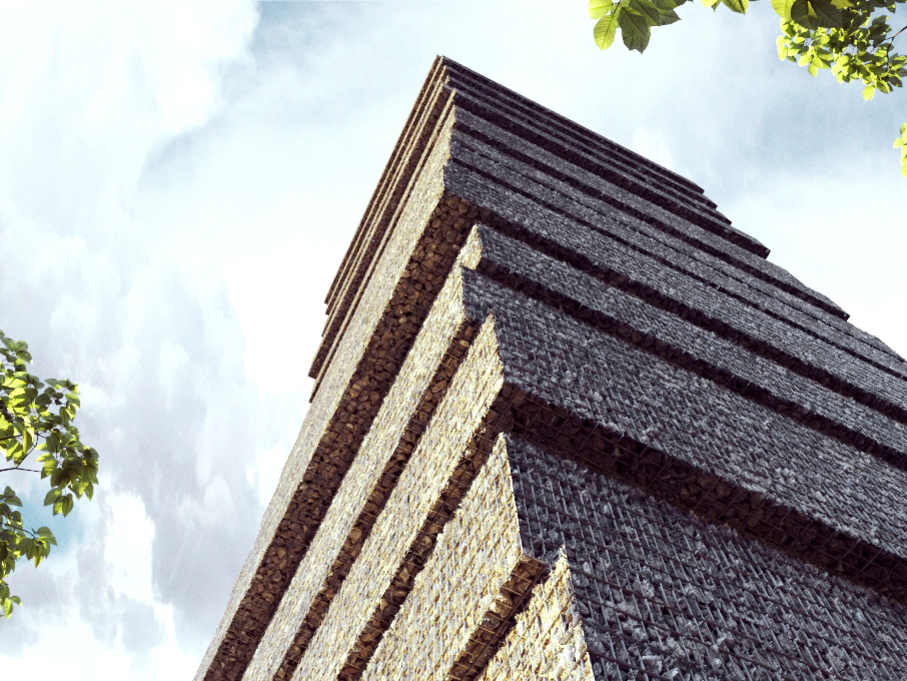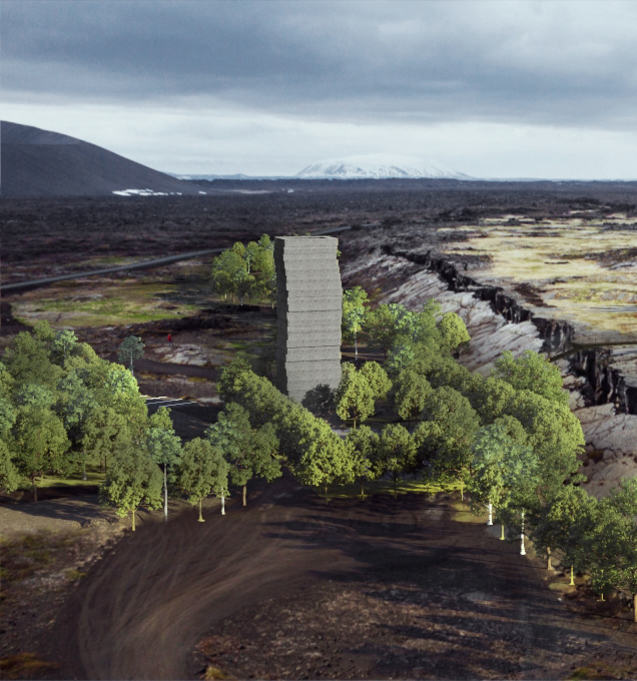
Visitor Centre, Iceland
Interim (/ˈɪnt(ə)rɪm), noun , 1. the intervening time.
Iceland lost most of its trees a long time ago, when Viking settlers took their axes to the forests. The country’s austere, largely treeless landscapes, punctuated by vast glaciers and stark volcanoes, have long been a favorite of the film industry, and attracted international tourism.
The lack of trees, coupled with the ash and larger pieces of volcanic rock spewed by eruptions, has led to severe soil erosion. The loose soil, combined with Iceland’s strong winds, has led to sandstorms that can further damage the land.
Reforesting the barren landscape would contribute to improve and stabilize the country’s harsh soils, help agriculture and fight climate change. Reforesting more of the Icelandic countryside would have benefits beyond helping farmers and stopping sandstorms. As climate change has become a greater concern, Iceland’s leaders have viewed reforestation as a way to help the country meet its climate goals.
The design proposal centres around rewilding the landscape of the site. It will lend structure to the growth for decades and centuries to come. All is based around what is there and what was there, to merge the past and the future in a continuous momentum called Interim. All will remain a process, the strategies for progress form the pillar of a restored ecosystem.
With plenty of rainfall the aim is to turn the wet deserts into lush nature once more. The process usually begins with lyme grass, which grows quickly and can stabilize the soil. Lupine, with its spiky purple flowers, is often next. The trees come later. Where the richness of the soils allows, trees can be planted from the beginning.
Sitka spruce, lodgepole pine, black cottonwood are already grown as saplings on the island, where tree imports are prohibited. Rowan trees, birches and to a lesser extent aspen can be found as native species.
The site will be restructured with clearly defined circulation for vehicles and visitors. The existing access road is proposed to be extended in a loop that reconnects it to the main road. This minimises circulation within site and the required space for it. Parking is aligned on either side of this new access road loop for coaches (along the road) and all other vehicles (perpendicular to the road)..
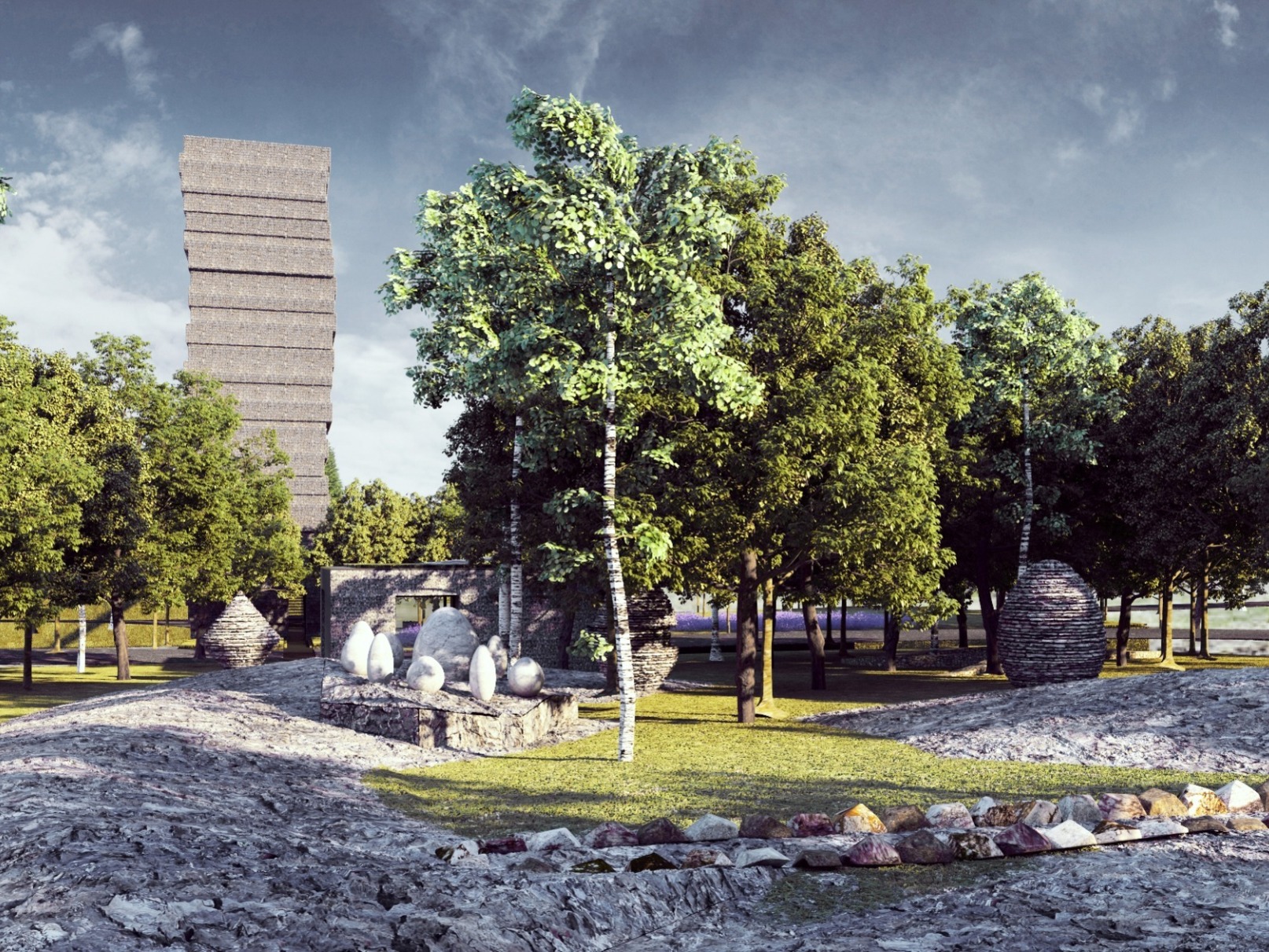
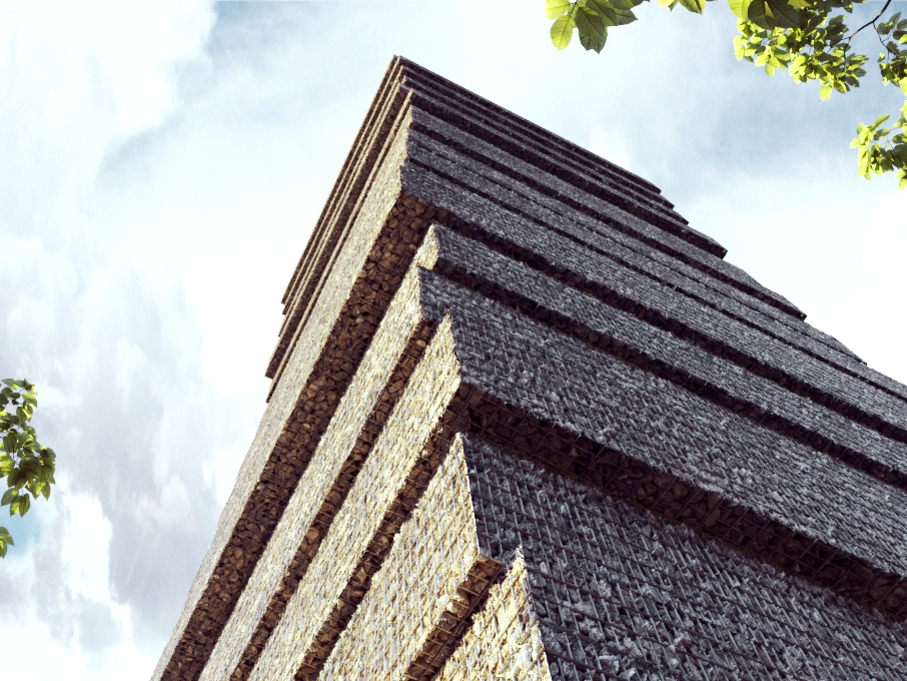
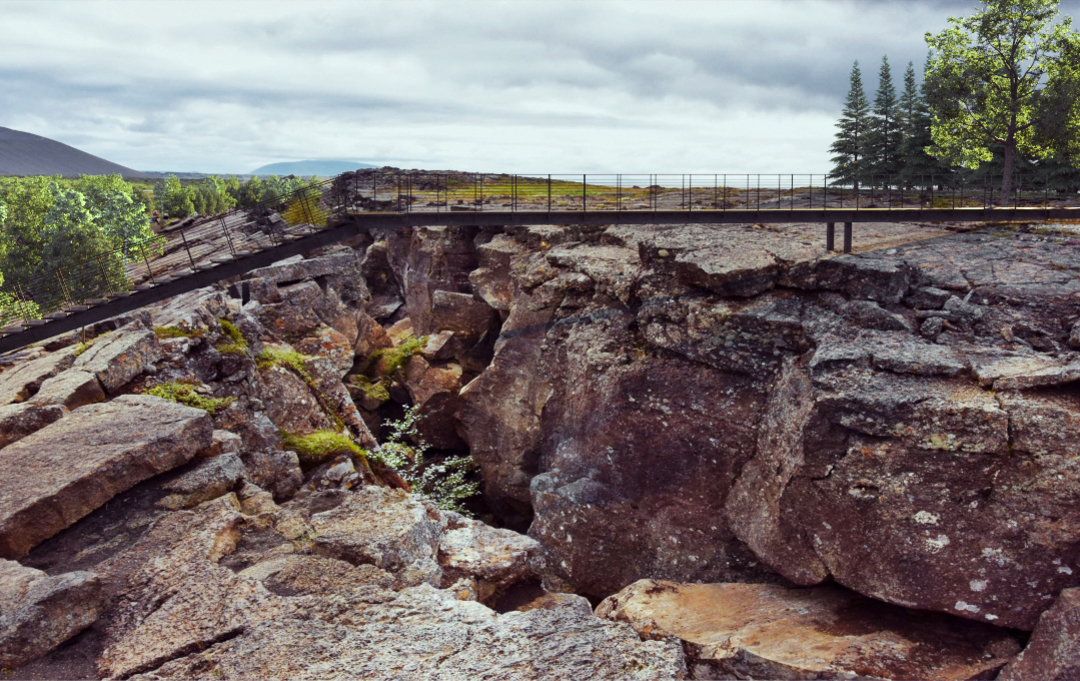



Visitor Centre, Iceland
Interim (/ˈɪnt(ə)rɪm), noun , 1. the intervening time.
Iceland lost most of its trees a long time ago, when Viking settlers took their axes to the forests. The country’s austere, largely treeless landscapes, punctuated by vast glaciers and stark volcanoes, have long been a favorite of the film industry, and attracted international tourism.
The lack of trees, coupled with the ash and larger pieces of volcanic rock spewed by eruptions, has led to severe soil erosion. The loose soil, combined with Iceland’s strong winds, has led to sandstorms that can further damage the land.
Reforesting the barren landscape would contribute to improve and stabilize the country’s harsh soils, help agriculture and fight climate change. Reforesting more of the Icelandic countryside would have benefits beyond helping farmers and stopping sandstorms. As climate change has become a greater concern, Iceland’s leaders have viewed reforestation as a way to help the country meet its climate goals.
The design proposal centres around rewilding the landscape of the site. It will lend structure to the growth for decades and centuries to come. All is based around what is there and what was there, to merge the past and the future in a continuous momentum called Interim. All will remain a process, the strategies for progress form the pillar of a restored ecosystem.
With plenty of rainfall the aim is to turn the wet deserts into lush nature once more. The process usually begins with lyme grass, which grows quickly and can stabilize the soil. Lupine, with its spiky purple flowers, is often next. The trees come later. Where the richness of the soils allows, trees can be planted from the beginning.
Sitka spruce, lodgepole pine, black cottonwood are already grown as saplings on the island, where tree imports are prohibited. Rowan trees, birches and to a lesser extent aspen can be found as native species.
The site will be restructured with clearly defined circulation for vehicles and visitors. The existing access road is proposed to be extended in a loop that reconnects it to the main road. This minimises circulation within site and the required space for it. Parking is aligned on either side of this new access road loop for coaches (along the road) and all other vehicles (perpendicular to the road)..

